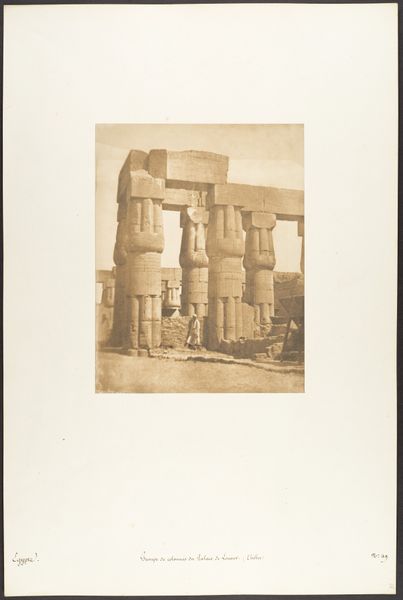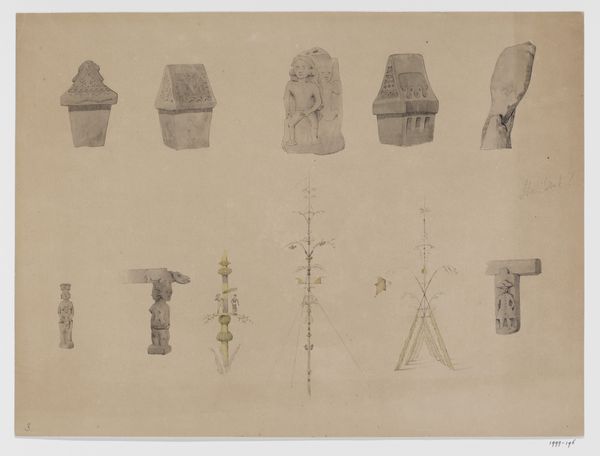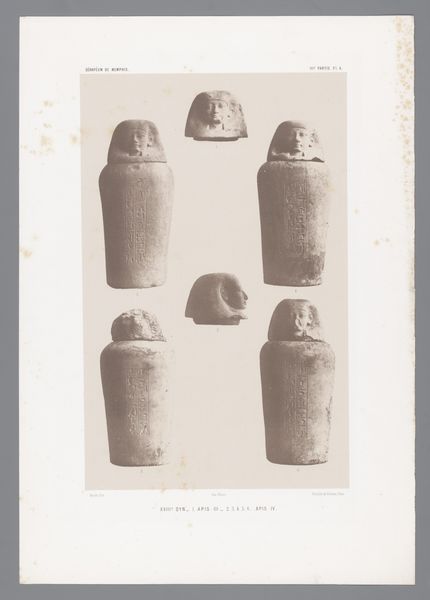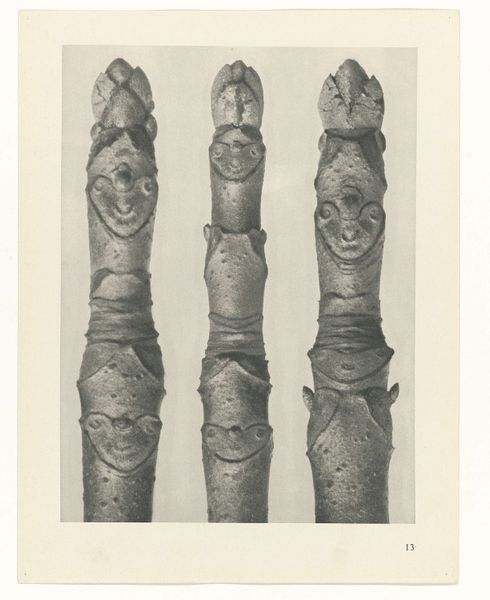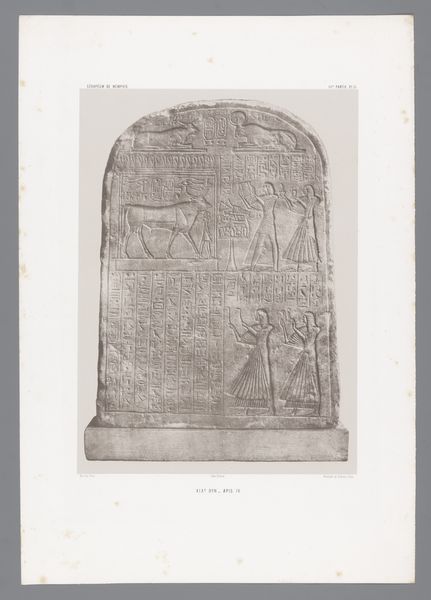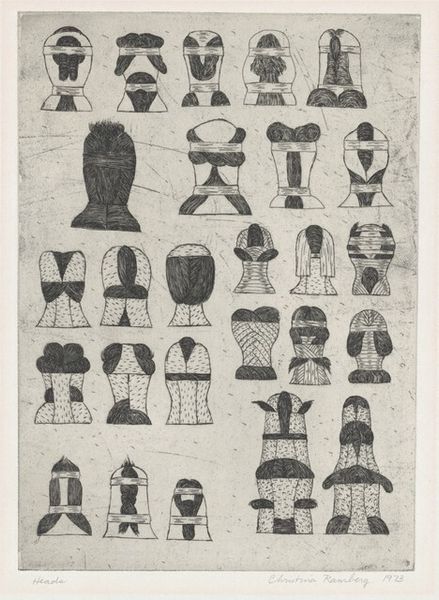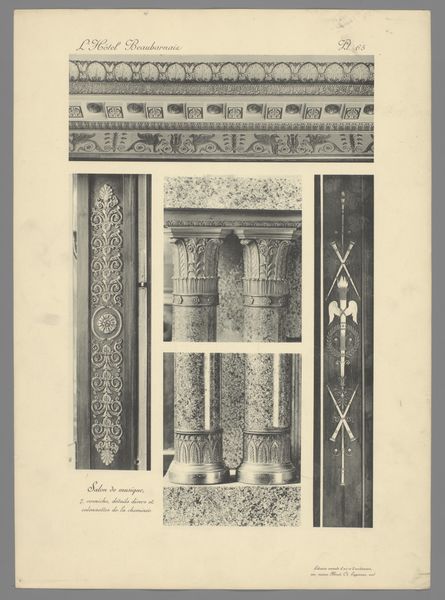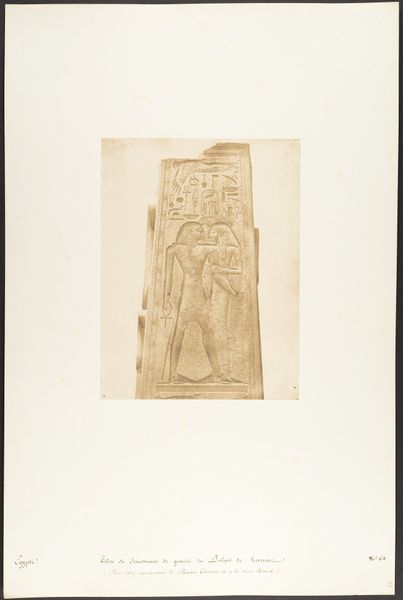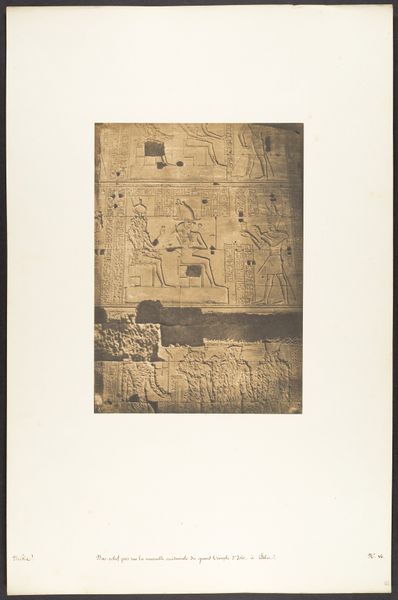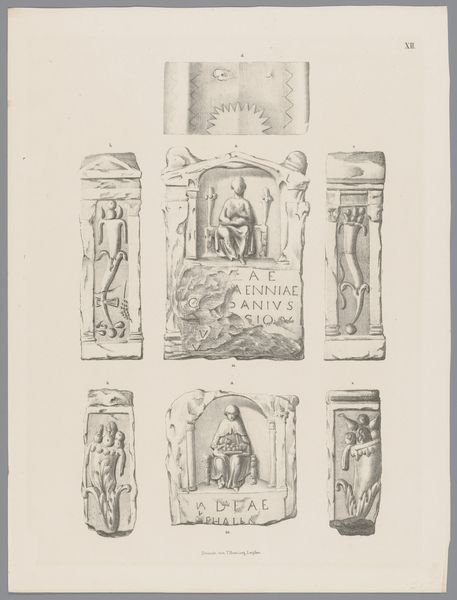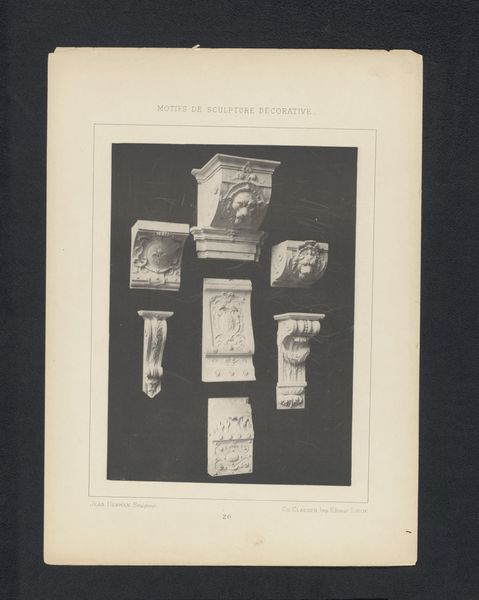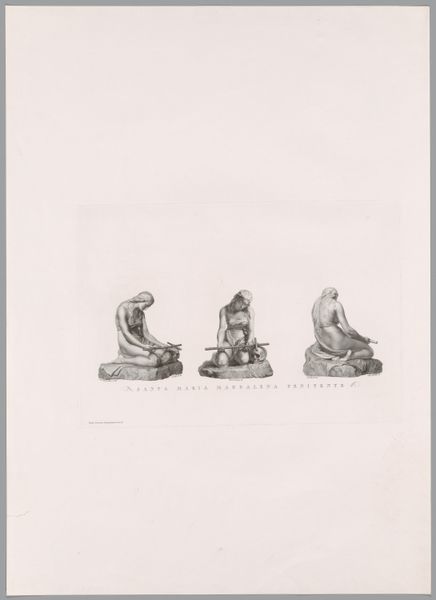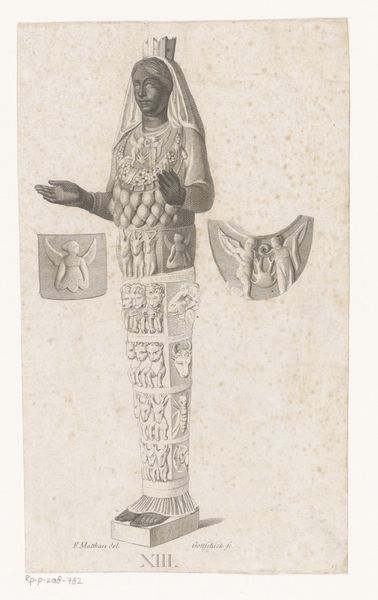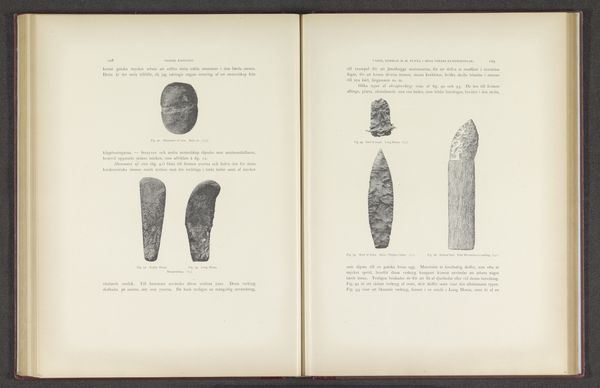
Vijf Apis-ushabti's en vier ushabti's, gevonden bij het Serapeum te Memphis 1852 - 1857
0:00
0:00
drawing, print
#
drawing
# print
#
ancient-egyptian-art
#
figuration
#
ancient-mediterranean
#
history-painting
#
miniature
Dimensions: height 339 mm, width 226 mm
Copyright: Rijks Museum: Open Domain
Curator: This is an image of “Vijf Apis-ushabti's en vier ushabti's, gevonden bij het Serapeum te Memphis,” a print created between 1852 and 1857. Editor: They have an interesting rigid design. Looking at the layout and monotone hues, it’s almost clinical, like a natural history study, even though they're sculptures from ancient Egypt. Curator: Well, these ushabti figures, discovered at the Serapeum, were far more than simple statuettes. The Apis bulls themselves were considered incarnations of the god Ptah, sacred animals imbued with potent spiritual significance. And the ushabtis were servants, stand-ins meant to perform labor in the afterlife for the deceased. They carry such weight in funerary practices. Editor: The visual encoding through the rendering has something clinical but it does offer a fascinating paradox of scientific detachment portraying intensely spiritual objects. The artist makes interesting use of the frame—setting a kind of grid which, rather than just ordering, seems to be subtly influencing my perception. Curator: I'm struck by how the varying iconography provides insights into ancient Egyptian cosmology. Some figures wear animal masks signifying protective deities and are associated with royal power, a connection to the divine realm meant to ensure the king’s transition to immortality. Note the placement of hieroglyphs on their bodies, it gives you some idea of the kind of formulas recited over them and inscribed on them. It speaks to identity, protection, and access to the afterlife. Editor: And this precise organization in this format presents an interplay of light and shadow enhancing the shapes, subtly, lending each a particular, well-balanced sculptural solidity. The print-making, or even the draftsmanship here, presents them like preserved specimens for dissection. The overall experience is very much informed by contrast between organic shape and controlled presentation. Curator: When you consider these images now, in our contemporary moment, this picture is speaking across millennia, from its moment of making to our moment of seeing. These little statues show a remarkable belief in magic. The print’s very existence echoes the themes of continuity that informed ancient funerary rites. Editor: Exactly! The visual language creates that echo. I’ll carry the way these contrasts play off each other with me, giving me much to continue exploring!
Comments
No comments
Be the first to comment and join the conversation on the ultimate creative platform.
